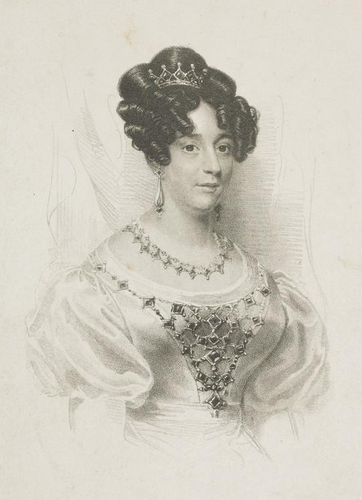
Today, the many descendants of the formidable Dorothy Thomas, a former slave turned slave owner also known as Dolly Kirwan or Doll Thomas, are spread across the British empire, as professionals including lawyers, actors, journalists, professors, merchants, and physicians. Yet, this extraordinary entrepreneur remains largely unknown here in Guyana, where she lived and made the bulk of her fortune.
Termed the richest woman and Black resident in the South American colony, she was born enslaved in Montserrat in about 1763, taking the Kirwan surname of her planter owner. Having purchased her own manumission, the determined Dorothy spent nearly 16 years securing the freedom of her children and several relatives, historians say. In Grenada, she finally signed the manumission documents for her slave – and elderly mother, Betty, in 1797. By the time of her death in British Guiana in August 1846, believed to be in her 80s, she had become a wildly successful Caribbean magnate with an independent fortune, and businesses from Barbados to Dominica and Grenada.
Scottish historian, Dr David Alston recounts, “In 1810 a remarkable black woman swept through Glasgow, to the consternation of some in the city” causing one West India merchant to write to his wife “exclaiming, ‘Who do you think is [here] but Gilbert Robertson’s Mother-in-Law Doll Thomas, with about 19 of her children & grandchildren come home for education’. No-one who met the redoubtable Dorothy Thomas forgot the encounter and from the scattered accounts of these meetings and other sources, two Australian academics, Cassandra Pybus and Kit Candlin, have rescued Doll – or ‘Mrs Thomas’ as she insisted on being addressed in person – from the obscurity of history.” Gilbert, the son of the Minister of Kiltearn, a parish in Ross and Cromarty, Scotland, was in a relationship with one of Dorothy’s six daughters. Although they were all partnered with prominent Whites, it was the matriarch who kept the families afloat when they faced financial peril.
In a recent article, Dr Alston added to the accounts in Dr Candlin’s book “The Last Caribbean Frontier” and the jointly authored “Enterprising Women: Gender, Race, and Power in the Revolutionary Atlantic.” The success of Mrs Thomas came from her primary enterprise in running teams of hucksters or enslaved women who sold goods to plantation workers around the colony. Then there were her many hotels, boarding-houses and rental properties. Useful kin and commercial connections came through relationships with a series of powerful White planters and merchants.
Moving to Demerara by 1807, to add to her fortune, she set up a boarding house near Werk-en-Rust, then a plantation on the southern edge of the capital Stabroek. But within a year, she moved to the northern section of the town, and a new neighbourhood, Cumingsburg, named for the plantation owned by Scotsman Thomas Cuming, buying several lots and paying taxes in 1808 for 16 slaves, the Australian historians disclosed.
By 1815, she was running the estate Kensington in Demerara, formerly held by her son Joseph. Her largest hotel, with a cistern capable of holding 5,000 or more gallons of water, began employing a French chef, Louis le Plat, for its restaurant, in 1817. That year, she purchased a live lion from Africa as an amusement for her guests, the academics added. Local newspapers reported on her purchases and sales of properties near the port, and as far away as Mahaica and Berbice.
At the confident centre of social life in Demerara, Mrs Thomas also became famous for her “balls and entertainments.” When the young clerk, John Castlefranc Cheveley, arrived in the colony in 1821 and called on ‘Miss Doll’, he noted in his journal that ‘she received me with the air of a superior,’ and that she presided ‘with the deportment of an empress,’ Dr Alston related.
Visiting London in 1824, she successfully lobbied for the removal of a tax which had been imposed on ‘free coloured’ women in Demerara. “We can be sure of this because on her return she was presented with a silver cup and plate by ‘a few Coloured Ladies of Georgetown’ as a token of their thanks for her successful efforts in having the ‘oppressive tax’ removed,” he said.
Among the accounts of Doll’s supposed encounters with British royalty, was the American consul’s vivid version in which she arrived at St James Palace in a coach drawn by six horses, with coachmen in livery. Dr Alston writes, “She was dressed in a diamond-studded turban with an ostrich feather, a necklace of gold doubloons, and a skirt made of £5 notes from the Bank of British Guiana sewn together. She demanded to see the colonial secretary and such was the impression she made that she was ushered in.”
As one of the few Black women, compensated as a slave owner, she received the highest of over £3,400 or some £300,000 today for the loss of her 71 labourers when Britain abolished Caribbean slavery. Of her 25 adult female slaves, 12 were described as sickly or invalid, and three were reported as being in their late nineties. Most of the others were men of working age and 13 were porters.
Dr Alston concludes, “it seems that in 1817 Dorothy Thomas was making money from her male slaves who worked as porters, perhaps around Georgetown’s busy docks, while creating a safe environment for a number of old female slaves.” The cost of manumission was prohibitive and these older women would have little to gain, so late in life, from the formal grant of their freedom. Strangely, one of her male slaves, a porter named Jim was categorised as ‘white’ and may have been an albino.
Pointing out that four of every five children of White men and enslaved women remained enslaved, he argued that it was more common for women to be granted freedom, because they were often the sexual partners of these men and the mothers of their children. In colonies with few White females, such as Trinidad, Demerara and Berbice, ‘free coloured’ women played an especially important economic and social role. Demerara had almost 80,000 enslaved people in 1817, but one in every 20 was the ‘property’ of a ‘free coloured’ woman. The colony had over 450 ‘free coloured’ women, and 12 of them, including Doll Thomas, owned at least 20 slaves, the historian reported.
Her entry in the Oxford Dictionary of National Biography states, the story of “Dorothy Thomas is significant in the history of the Caribbean and the growing British empire. She deftly navigated a difficult world to obtain freedom for both herself and her large family. The success she was able to achieve in not just one colony, but several, is extraordinary. Dorothy Thomas sits therefore at the apex of a list of free coloured and free black female entrepreneurs who were able to exploit the fluid situation in the Atlantic world during the age of revolutions and achieve remarkable success. The education she so assiduously provided for her children and grandchildren enabled them to exploit their advantaged position and find a niche in the heart of the British empire.”
ID learns about Doll’s grandson, the journalist George Augustus Sala who remembered his great grandmother in London in the early 1830s bellowing and swearing at her many ‘sable handmaidens.’ “These damsels, with coloured pocket-handkerchiefs tied round their black heads, used to sit shivering on the stairs of the red brick house, and cry to be sent back to their own country.”






